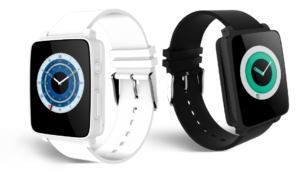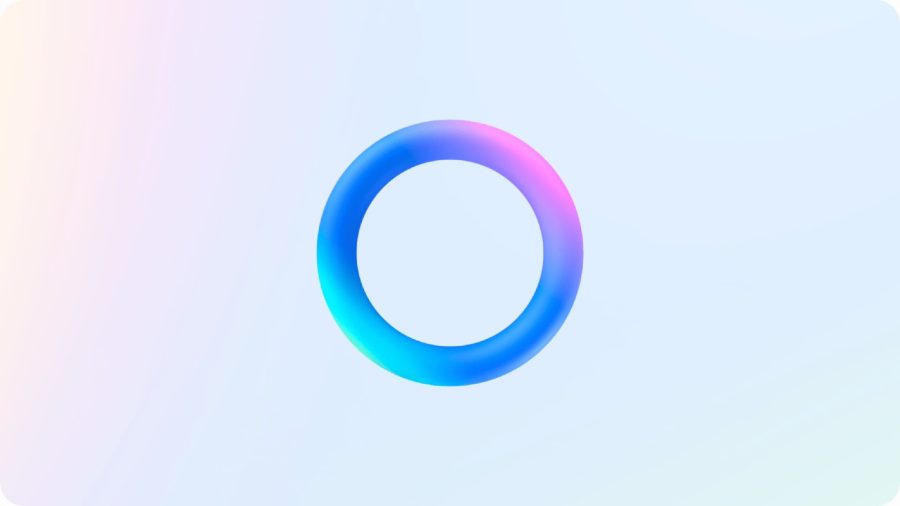Entrepreneurs, take heart. You don’t have to be a giant international manufacturing company to build killer wearables. Even small companies can do it, if they make smart choices about hardware development.
The Polar M600 is a fitness watch that’s been garnering rave reviews for its extra-long battery life. But the key to Polar’s long battery life — 10 hours with the GPS on; two days with it off) — is its chipset, the MediaTek MT2601, which is optimized for low power consumption.
When it comes to wearables, battery life is a huge pain point, not only for consumers who aren’t crazy about having to recharge wearables on a daily basis, but for those who design them. Small form factors don’t leave room for a lot of battery; and with batteries, a small physical size equates to small energy capacity.
That’s why design decisions, like which chipset to use, are incredibly important. Wearable designers have to strike a balance between performance, power consumption, and size. And that’s only part of the story. Development can quickly turn into a series of tradeoffs between seemingly incompatible design goals. At the same time, you need to hurry up and bring the device to market—or at least to a point where you can get funding.
See also: It’s not hard to make IoT hardware easy
Without deep resources, you could easily be looking at a few years of building the hardware, creating software interfaces, and getting your product ready to show — and that’s before you’ve even tried to sort out how production will work.
Larger companies are more apt to have the resources for that kind of investment, something that used to keep entrepreneurs off the playing field. Fortunately, that’s changed. But today, even small companies can compete on the same stage as Polar, thanks to rapid hardware development kits and associated software development kits from ecosystem/developer programs like MediaTek Labs. These kits open up a path for exploring ideas, create new proof-of-concept devices and IoT applications.
MediaTek powers Tinitell wearables
Consider Tinitell, which has created an easy-to-use, simplified wearable phone for kids. The Swedish startup built a rugged, water- and dirt-resistant watch with just one button to call Mom or Dad, or to answer their incoming calls. And the watch has a built-in GPS, so parents can always keep tabs on the location of their child, using an accompanying Android or iOS app.
MediaTek developer kits, like the Linkit ONE used by Tinitell to determine the proof-of-concept of its innovative new product, provide a platform for startups who want to build wearable and IoT devices successfully. These kits offer developers the ability to quickly prototype a new wearable or IoT product.
Tinitell was just a small startup without the deep pockets of a large R&D organization. Yet, it was able to use a MediaTek hardware developer kit to try out different concepts and eventually create a prototype of its phone for kids to promote on Kickstarter and get the funding it needed to finalize its product with one of MediaTek’s supply chain partners/ODMs and go into production. Tinitell hit its campaign goal of $100,000 in just seven days.
Another examples of a commercially launched Wearable based on MT2502 is the HUG Smartwatch from India.
The Hug Smartwatch is designed to help users control their gadgets with just the motion of a hand. Hug is the world’s first Gesture Control Smartwatch with integration that enhances the customer experience in Virtual Reality with the Oculus Rift. Based on MT2502, the Hug Smartwatch enables its users to make calls, track physical activity and nutrition, play music and find misplaced or stolen devices.
MediaTek developer kits, such as the Linkit ONE, can be used by startups like Tinitell and HUG Innovations to create a proof-of-concept of their innovative new product, and provide a platform for them to build wearable and IoT devices successfully. These kits offer developers the ability to quickly prototype a new wearable or IoT product.
New developer kits arrive
The idea of a developer kit is not new. Software companies have been providing software development kits (SDK) for years to simplify things for developers who might want to build new products on top of the software company’s platform.
MediaTek, with almost two decades of experience as a chipset maker for a broad spectrum of consumer electronics products, saw an opportunity to create something similar, but decided to focus on hardware.
Specifically geared for tomorrow’s IoT and wearable tech entrepreneurs, LinkIt ONE is an open-source, high performance board for rough-and-ready fast prototyping, so entrepreneurs can get where they need to go and land the funding they need to keep going. They include: MediaTek LinkIt ONE for the creation of proof-of-concepts with unrivaled connectivity on a single board, developed using the Arduino IDE; MediaTek LinkIt Assist 2502 for the development of sophisticated proof-of-concepts in a wearable form factor. Offers C programmers a feature rich Eclipse based environment; and MediaTek LinkIt Development Platform for RTOS supports multiple chipsets, including MT2523, based on FreeRTOS and ARM Cortex-M4 architecture, offering high performance, low power connectivity.
The LinkIt ONE platform has been the most popular among DIY makers thanks to its ease of use and all-in-one connectivity options. There are several hundred maker projects based on MediaTek LinkIt ONE on Hackster and on Instructables. LinkIt ONE is based around a commercial system-on-a-chip for wearables: the MediaTek MT2502 (Aster), which includes 4MB of RAM and 4MB of flash memory, as well as support for Bluetooth LE, Wi-Fi, GSM cellular connectivity, and more.
The kit includes a board, similar to the Arduino board, with plenty of pins for connecting sensors, displays, and other peripherals. The MT2502 chip itself is tiny — about half the size of your pinky nail — leaving plenty of room for whatever other hardware you might want to include. Additionally, the LinkIt ONE board/HDK includes energy efficient Wi-Fi and GNSS companion chipsets, so you can easily create devices that connect to other smart devices or directly to cloud applications and services.
In the two years since its launch, MediaTek Labs has rolled out five different MediaTek LinkIt platforms, supporting a broad range of IoT use-case scenarios, including Wearables, Smart Home & Office, Smart Cities and more. Each of these kits comes with an associated SDK, so you can create apps for your devices as well. Launched this year, the new LinkIt Development Platform for RTOS with LinkIt 2523 HDK by SAC, is used for rapid prototyping of Bluetooth-enabled Wearables with fast and accurate positioning. Development and debugging is supported in ARM Keil μVision, IAR Embedded Workbench and GCC. Perhaps most useful to ambitious developers, this kit is based on production chip and production code, making it easier to transition seamlessly from prototyping to production.
Health-centric wearables have their own needs
In the world of health-centric wearables, where performance and reliability are critical, MediaTek developed new chipsets to tackle that marketplace. They recently introduced their first bio-sensing Analog Front-End (AFE) chip, MT2511, designed for health and fitness devices, which can be paired with a System on a Chip (SoC) or microcontroller unit (MCU) integrated with a number of the MediaTek’s wearable platforms to cater to a variety of product design requirements.
It can be incorporated into devices that range from simple to advanced applications, with or without touch screens. This 3mm x 3.4mm sized chipset is easy to integrate into wearable devices to provide the benefits of powerful biometric sensing.
The MT2511 acquires biometric signal through simultaneously gathering electrocardiography (ECG) and photoplethysmography (PPG) data. ECG data is used to monitor the heart for stress, and will be useful when integrated in health and fitness applications to determine levels of strain during exercise and during normal daily activities. PPG is an optical technique that detects blood volume changes at the skin surface, and provides valuable information about the cardiovascular system.
Wearable success factors are driven by energy consumption, size and connectivity. Especially for fitness smart watches, MediaTek this year launched a new SoC, the MT2523G, the first chipset to offer GNSS — covering all the leading satellite positioning systems and standards — with dual-mode Bluetooth 2.1 and Bluetooth 4.2 Low Energy with high resolution mobile screen capabilities supported by MIPI. It offers a very high level of sensitivity, accuracy and Time-to-First-Fix (TTFF) with low power consumption.
The MT2523G combines all of that capability in a small 9.2mm x 6.0mm package, with an ARM Cortex-M4 processor, which combines high-efficiency signal processing functionality with low power, low cost and ease-of-use benefits.
These MT2523 chipsets are both is supported by the new MediaTek LinkIt Development Platform for RTOS. Based on the popular FreeRTOS with additional open-source modules, the RTOS platform supports chipsets based on the ARM Cortex-M4 architecture, offering high performance, low power connectivity, and development and debugging in ARM Keil μVision, IAR Embedded Workbench and GCC.
IoT developer community outreach is also key
In the two years since its launch, MediaTek Labs has rolled out five different MediaTek LinkIt platforms, supporting a broad range of IoT use-case scenarios. Each of these kits comes with an associated SDK, so you can create apps for your devices as well. Perhaps most useful to ambitious developers, all of these kits are based on production chips and production code, making it easier to transition seamlessly from prototyping to production.
MediaTek’s experience in smartphones, media, and connectivity make it well-suited to help designers of IoT devices. Since the company’s founding nearly 20 years ago, it’s been making chips for everything from smartphones to smart TVs, home entertainment to home automation, and technology both wireless and wearable.
So for startups with a vision for the future that want to quickly explore new concepts and ideas in the wearable and the IoT market, MediaTek’s developer kits offer a great starting point.
But a broad IoT chipset product portfolio isn’t enough. The expansion of MediaTek’s IoT market efforts has also been supported by building the company’s IoT developer program.
MediaTek Labs is a core touch point for budding entrepreneurs as well as larger IoT companies and provides the technical documentation, software and hardware development platforms as well as technical and business support needed to take your idea from idea to prototype to production.
MediaTek Labs also provides self-help resources online, and has a staff that monitors and responds to forum entries for questions related to developing IoT solutions based on MediaTek chipsets. Numerous developers have successfully created proof of concept designs using the MediaTek LinkIt platforms, and some have begun their commercial launches after starting their projects using the LinkIt HDKs.











